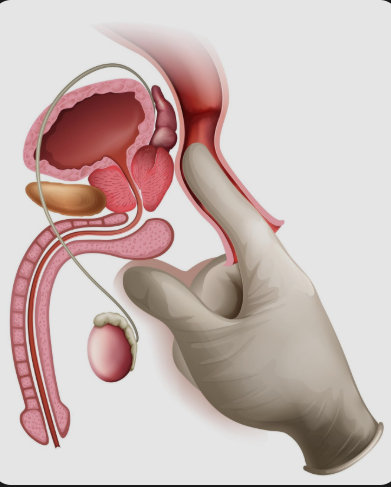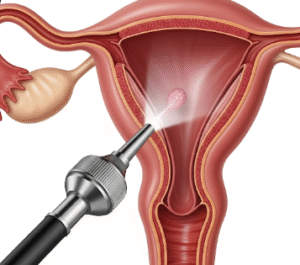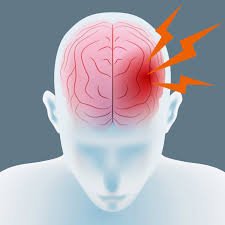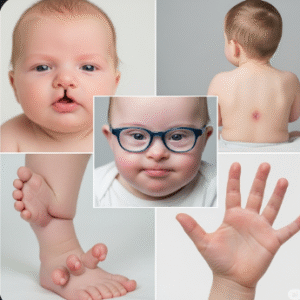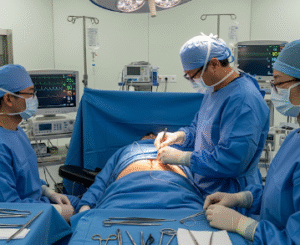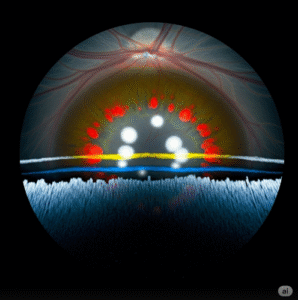Overview
Undescended Testicles is a condition in which one or both testicles fail to move into the scrotum before birth. It is one of the most common congenital abnormalities in male infants and may resolve on its own within the first few months of life. However, persistent undescended testicles may require medical or surgical intervention to prevent fertility issues, hormonal imbalance, or increased cancer risk later in life.
What is Undescended Testicles
Undescended Testicles, also known as cryptorchidism, is a condition where one or both of the testes fail to descend from the abdomen into the scrotal sac during fetal development. Normally, the testes descend during the last few months of pregnancy. When this process is incomplete, the testicle may remain in the abdomen, groin, or another location outside the scrotum. The condition is most commonly diagnosed at birth or during early infancy.
Symptoms
- Empty scrotum on one or both sides
- Palpable mass in the groin or lower abdomen (in some cases)
- Asymmetrical appearance of the scrotum
- No pain in most cases, though complications may cause discomfort later
- Infertility or hormonal issues in adolescence or adulthood (if untreated)
Causes
The exact cause of undescended testicles is not fully understood, but several factors may interfere with normal testicular descent:
- Hormonal imbalances during fetal development
- Abnormal abdominal pressure or muscle development
- Genetic mutations or syndromes (e.g., Kallmann syndrome)
- Premature birth or low birth weight
- Maternal health factors, including diabetes or smoking during pregnancy
Risk Factors
- Premature birth (born before 37 weeks)
- Low birth weight
- Family history of undescended testicles or genital abnormalities
- Hormonal disorders
- Exposure to environmental toxins during pregnancy
- Congenital syndromes, such as Down syndrome or Prader-Willi syndrome
Complications
- Infertility due to impaired sperm production in undescended testes
- Testicular cancer, particularly seminomas, later in life
- Testicular torsion (twisting of the spermatic cord)
- Inguinal hernia associated with incomplete descent
- Psychological and body image issues, especially in adolescence
- Trauma or damage to abdominally located testicles
Prevention
While undescended testicles often occur spontaneously, some preventive strategies may reduce risk:
- Prenatal care to ensure healthy fetal development
- Avoidance of harmful substances during pregnancy (smoking, alcohol, toxins)
- Managing maternal conditions like diabetes or thyroid disease
- Regular pediatric exams for early detection and monitoring
- Genetic counseling for families with a history of cryptorchidism or related syndromes
Treatment Options in Korea
South Korea offers advanced pediatric and urological care for undescended testicles, ensuring early diagnosis and timely intervention:
- Observation: In many cases, the testicle descends on its own within 6 months after birth
- Hormone therapy: Use of human chorionic gonadotropin (hCG) or GnRH analogs to stimulate descent (less commonly used today)
- Surgical correction (Orchiopexy): The most common and effective treatment; performed around 6–18 months of age to relocate and secure the testicle in the scrotum
- Laparoscopy: Minimally invasive approach used when the testicle is not palpable
- Monitoring of fertility and cancer risk in adolescence and adulthood
- Testicular prosthesis: Option for older patients who lose a testicle due to complications
Korea’s pediatric surgeons and urologists provide excellent outcomes with minimally invasive techniques and comprehensive follow-up care.

